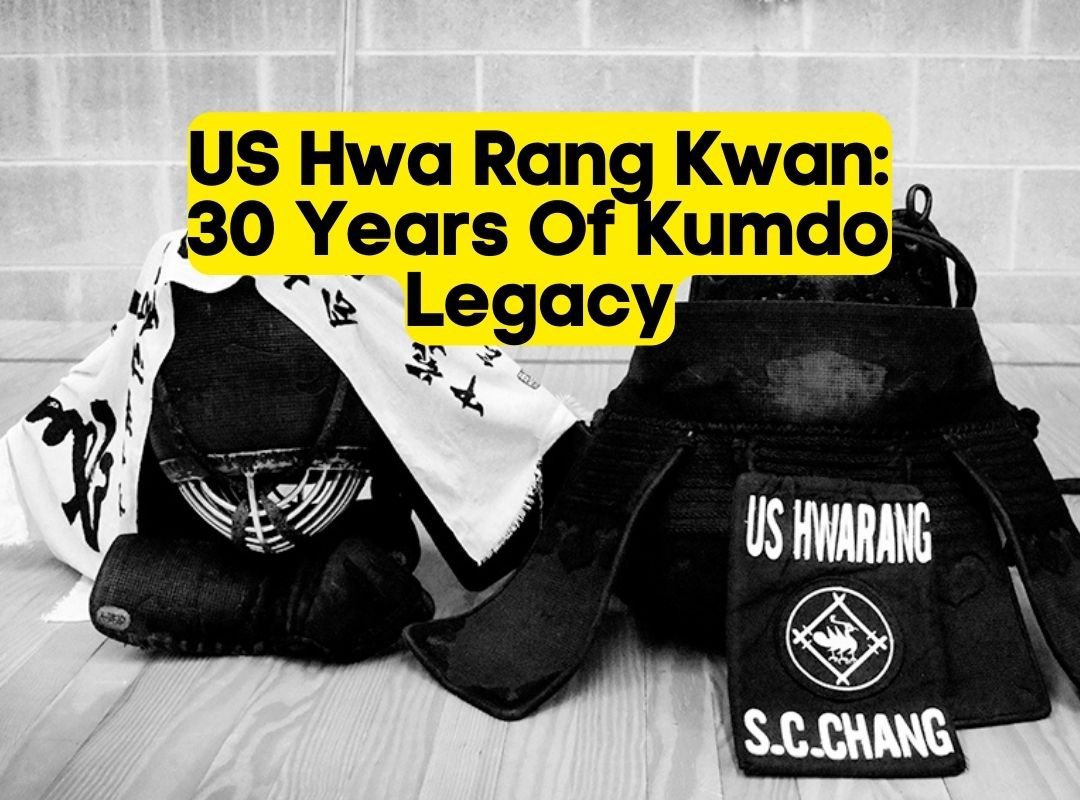Martial arts belts symbolize growth and dedication, marking a student's journey from novice to master through color-coded ranks.
Key Takeaways 📝
- The martial arts belt system is a visual representation of a student’s journey, symbolizing growth, discipline, and personal development from novice to master.
- The introduction of the belt system by Jigoro Kano in the late 19th century provided formal recognition of progress, enhancing motivation and clarity in martial arts training.
- Contrary to popular belief, earning a black belt signifies mastery of foundational techniques but marks the beginning of deeper learning and teaching opportunities.
- Advancing through the ranks involves not just physical skills but also mental discipline, resilience, and personal reflection, making each belt earned a testament to an individual's dedication.
- The cultural significance of martial arts belts extends beyond training, influencing perceptions of discipline and respect in society, while also evolving to adapt to modern practices.
Welcome to the fascinating world of martial arts, where the belt around your waist is more than just a piece of fabric—it's a symbol of your journey, dedication, and progress. The martial arts belt order is a structured system that tells a story of growth, skill, and personal development. In this blog post, we'll dive deep into the belt system, exploring the history, the meanings behind each color, and what it truly means to advance through the ranks.
Introduction to Martial Arts Belt Order
If you've ever watched a martial arts movie or attended a dojo, you've likely noticed the colorful belts tied around the practitioners' waists. But what do these belts really mean? The martial arts belt order is more than just a ranking system; it's a visual representation of a student's journey from novice to master. Each color signifies a different stage of learning and personal growth, making the belt system a crucial part of martial arts culture. So, let's unpack the mystery behind these belts and explore what they truly represent.
The Origin of Martial Arts Belt System
The history of the martial arts belt order dates back to the late 19th century, introduced by Jigoro Kano, the founder of Judo. Before the belt system, there was little formal recognition of a student's progress, which could be quite disheartening. Kano's innovation brought structure and motivation, allowing students to track their progress visibly.Who was Jigoro Kano? He was a pioneer in martial arts, who believed in the educational potential of martial arts training. When and where did it all start? The belt system was first implemented in Japan in the 1880s. Why was it necessary? Simply put, it provided students with a clear path and goals to strive for, enhancing their learning experience.
Understanding Belt Colors and Their Meanings
White Belt: Symbol of Purity and New Beginnings
The white belt is where every martial artist begins their journey. It symbolizes purity and innocence, much like a blank canvas awaiting the artist's touch. At this stage, students are eager and open to learning, laying the foundation for their martial arts journey.
Yellow Belt: First Steps of Enlightenment
Earning a yellow belt is akin to seeing the first rays of sunlight, bringing clarity and direction. It marks the initial steps toward enlightenment and understanding of basic techniques and principles.
Orange Belt: Growing Strength and Confidence
With the orange belt, students begin to feel their strength and confidence grow. It's like the warmth of the sun intensifying, fostering a sense of assurance in their abilities and a deeper understanding of martial arts.
Green Belt: The Phase of Growth and Refinement
Green belts symbolize growth, much like a budding plant reaching for the sky. At this level, students are refining their techniques, building on the knowledge gained in previous stages, and demonstrating significant progress.
Blue Belt: Reaching for the Sky
The blue belt reflects the limitless sky, symbolizing the student's continued growth and ability. It's an indication that practitioners are reaching new heights in their training, expanding their horizons.
Purple Belt: Transition and Transformation
Purple belts experience a period of transition, much like the changing colors of the sky at dawn. This stage is about transformation, preparing the student for more advanced techniques and deeper insights into martial arts.
Brown Belt: Maturity and Readiness
The brown belt signifies maturity and readiness for the next phase of learning. It's a stage where students have honed their skills and are prepared for the challenges of becoming advanced martial artists.
Red Belt: Danger and Responsibility
The red belt is a powerful symbol of danger and responsibility. It represents a high level of proficiency, and with it comes the responsibility to use one's skills wisely and ethically.
Black Belt: Mastery and New Beginnings
Achieving a black belt is a milestone many students aspire to. It symbolizes mastery of the basic techniques and principles. However, it's not the end—rather, it's a new beginning, as black belts continue to learn and often start teaching others.
The Significance of the Black Belt
Earning a black belt is a testament to years of dedication, discipline, and perseverance. But what does it truly mean to achieve this status? A black belt signifies not just technical proficiency, but also a deep understanding of martial arts philosophy and ethics. It's a symbol of the journey rather than the destination, as the learning never truly ends. Many black belts become instructors, passing on their knowledge to the next generation.
Differences in Belt Systems Across Martial Arts
While the belt system is common across many martial arts, the specifics can vary significantly. Karate, for instance, often includes belts like yellow, orange, green, blue, brown, and black. Taekwondo might incorporate additional colors such as red and black-red. Brazilian Jiu-Jitsu typically has a more streamlined system with white, blue, purple, brown, and black belts, but with longer time spans between promotions.Each discipline has unique characteristics and expectations for advancing through the belt ranks, reflecting the diversity and richness of martial arts traditions.
The Personal Journey of a Martial Artist
Advancing through the martial arts belt order is deeply personal, shaped by individual experiences and challenges. It’s a journey filled with sweat, sometimes tears, and a whole lot of perseverance. As you move from one belt to the next, you’re not just learning new techniques—you’re also learning about yourself. Every belt earned is a testament to your resilience and dedication.
The Role of Belt Tests and Examinations
Belt tests are pivotal in the martial arts journey. They serve as milestones, providing students the opportunity to demonstrate their skills and readiness to advance. What can you expect during a belt test? Typically, a combination of demonstrating techniques, sparring, and sometimes even written exams to test your understanding of martial arts philosophy.
The Cultural Impact of Martial Arts Belts
Martial arts belts have become cultural icons, often seen in movies, television, and even fashion. They symbolize discipline, respect, and strength, often influencing how martial arts are perceived in society. Whether you’re a martial artist or not, the belt system's cultural impact is undeniable.
Training Tips for Advancing Through the Ranks
Want to climb the ranks? Consistent practice is key. But remember, martial arts is as much about mental discipline as physical prowess. Stay focused, set realistic goals, and embrace every lesson—both successes and failures. Surround yourself with supportive peers and instructors who can guide your journey.
Common Misconceptions About the Belt System
There are quite a few myths surrounding the martial arts belt order. One common misconception is that earning a black belt means you’ve mastered the art. In reality, it’s just the beginning of deeper learning. Another myth is that belts can be easily skipped. Most martial arts schools emphasize stepping through each stage to ensure comprehensive learning.
The Future of Martial Arts Belt Systems
As martial arts continues to evolve, so does the belt system. Modern innovations include more detailed ranking systems, digital tracking of progress, and even virtual belt tests. Despite these changes, the core principles of respect, discipline, and personal growth remain unchanged.
Final Thoughts
The martial arts belt order is a vibrant tapestry, with each color representing a unique milestone in a practitioner's journey. It's a system steeped in tradition and symbolism, guiding students from their first steps as beginners to the mastery of skills and philosophies. As you progress through each belt, you're not just advancing in rank—you're developing as a person, honing your discipline, resilience, and understanding.The belt system serves as a powerful motivator, a clear roadmap of progress, and a reminder of the discipline that martial arts instills. Whether you're just starting out with your white belt or you're wearing the revered black belt, every step on this journey is an opportunity for growth.
FAQs
What is the highest belt in martial arts?
The highest belt varies by martial art, but traditionally, the black belt is considered a high level of mastery. Some systems include degrees or dans beyond the black belt to signify further levels of expertise.
Can you skip belts in martial arts?
Generally, skipping belts is not common practice. Each belt represents a specific set of skills and knowledge that is essential for a well-rounded foundation. However, there may be exceptions based on a student's prior experience or proficiency.
How long does it take to earn a black belt?
The time it takes to earn a black belt varies widely depending on the martial art, the student's dedication, and the school's curriculum. On average, it can take anywhere from 3 to 10 years.
Are there belts beyond black in martial arts?
Yes, many martial arts have degrees or dans beyond the black belt to signify further mastery and experience. These are typically denoted by stripes or additional colors on the black belt.
How important is the belt system in martial arts?
While the belt system is an important tool for measuring progress and setting goals, it's not the sole focus of martial arts. The emphasis is on personal development, discipline, and the lifelong pursuit of knowledge and skills.
As you continue your journey in martial arts, remember that the belts are a guide, not the goal. Embrace the process, learn from each experience, and appreciate the growth that comes with every stage. The journey is as rewarding as the destination, and every belt you earn is a testament to your commitment and passion for the art.









